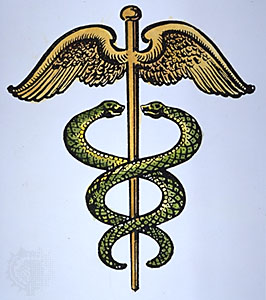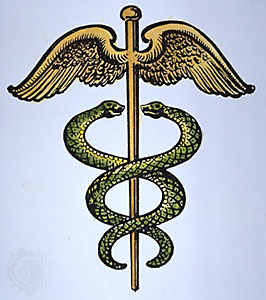 You may have seen the screaming New York headlines: Doctors hit with 14% increase in medical malpractice rates! Doctors in high risk specialties paying 6-figure insurance premiums! Insurance reserves so low carriers may become insolvent! Blame the lawyers! came the cry from the doctor’s, for surely it must be due to medical malpractice cases. A little protectionism called tort “reform” would go a long way to curing the problem. Right?
You may have seen the screaming New York headlines: Doctors hit with 14% increase in medical malpractice rates! Doctors in high risk specialties paying 6-figure insurance premiums! Insurance reserves so low carriers may become insolvent! Blame the lawyers! came the cry from the doctor’s, for surely it must be due to medical malpractice cases. A little protectionism called tort “reform” would go a long way to curing the problem. Right?
Ahh, but truth is another matter. Was it really medical malpractice lawsuits that lead to this increase? Let’s take a candid look at some actual facts:
- New York’s Superintendent of Insurance, who sets the amount of rate increases, says this jump comes “After years of artificially low rate increases” and that “the rate increase comes after years of setting rates below what was needed.” He did it now in order to avert a possible “irreversible crisis.” (Did doctors previously complain that their rates were too low?) So, the Superintendent says, New York must play catch-up with a big rate hike;
- The State of New York had previously “appropriated” $691M of medical malpractice insurance reserves to balance the state budget from the Medical Malpractice Insurance Association. This association had been established by the state to satisfy any deficiencies attributable to the premium levels for malpractice policies, and for reinsurance. That surplus would have been used (if not taken for other purposes) for maintaining the solvency of New York’s three medical malpractice insurance carriers.
OK, so the “crisis” was caused by lousy state policy under the George Pataki administration, by setting artificially low rates while also swiping the rainy day fund. Surely, however, the problem was also caused in part by increasing medical malpractice cases and payouts, right?
Well, no. In fact a study has shown that the number of medical malpractice cases in New York has remained static, and the amount of payouts has kept pace with other health care costs. When premiums go up, but the payouts are flat, you know you have a problem. But not one created by those who were injured by negligence.
And have high medical malpractice insurance rates in downstate counties chased away physicians, as the fear-mongers suggest? Not even close. It seems the number of doctor in New York jumped by 16% from 1995 to 2003, an increase greater than our growth in population. And the New York Times reported just last week in Few Young Doctors Step in as Upstate Population Ages, that while there was 6 percent growth in the number of doctors from 2001 to 2005, for a total of about 77,000 doctors, the way they are spread throughout the state is wildly uneven. The Times wrote:
While newly licensed doctors flock to New York City, Long Island and Westchester County, where there is already a glut, far fewer choose to practice in the vast upstate region.
As the article makes clear, and as New Yorkers know, upstate has suffered economic woes in past years, much of which was related to the loss of industry. This isn’t a doctor issue. People move to the big city for a multitude of reasons, just as they always have.
Perhaps the problem is an onslaught of frivolous litigation? Nope, not that either, according to a report in the New England Journal of Medicine that disproves the myth of frivolous malpractice litigation.
Here’s a suggestion for the new Eliot Spitzer administration: Government clearly created this insurance problem, as your Superintendent admits. You therefore need insurance reform. So don’t try to fix it on the backs of the most badly injured of New Yorkers with some type of “tort reform” because that won’t fix a government created problem. Even insurance company insiders will tell you that “tort reform” will not bring on lower rates.
And while the governor’s brother is a neurosurgeon in a downstate county, and therefore probably both at the top end of malpractice rates along with his colleagues and in a good position to lobby his brother, it’s hard to evaluate the significance of such expenses without also knowing what their income is. Complaining about a low-six figure premium while taking home a seven-figure income for a high-risk specialty will not bring too much sympathy.
Now here is a reform that the doctor’s may want to entertain: With up to 98,000 people per year dying from medical errors, and with 68% of New York’s medical malpractice payouts coming from just 7% of the doctors, maybe, just maybe, a little more gazing in the mirror might be in order? Perhaps the medical lobby should inform their physician-constituents about the facts, instead of simply handing them propaganda to put in their waiting rooms?
So what do I expect from all this? Not insurance reform, for that would be the obvious thing. And not greater enforcement from the State Health Department on recurrently problematic doctors. It hasn’t happened yet, so why expect it now? No, I believe many will use this governmentally created mess as an excuse to strip rights away from those most severely injured by malpractice. You can almost hear the screams for caps (even though we already have them) and health courts coming from the protectionists who want to shield the negligent from taking responsibility for their mistakes.
While New York’s physicians already enjoy wide immunity from litigation payouts due to the horrible economics of taking medical malpractice cases, except in the most disastrous of matters, I fully expect their lobbyists will want more, more, more. And the facts be damned.
————————-
Addendum, after Eliot Spitzer resigns: Eliot’s Mess: The Ramifications for Medical Malpractice “Reform” in New York
————————-
(Eric Turkewitz is a personal injury attorney in New York)



